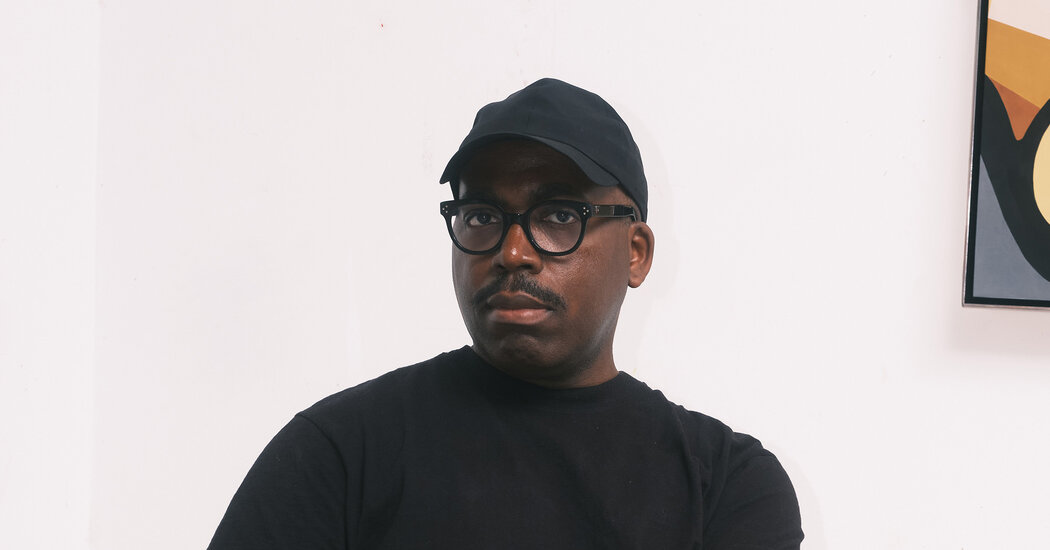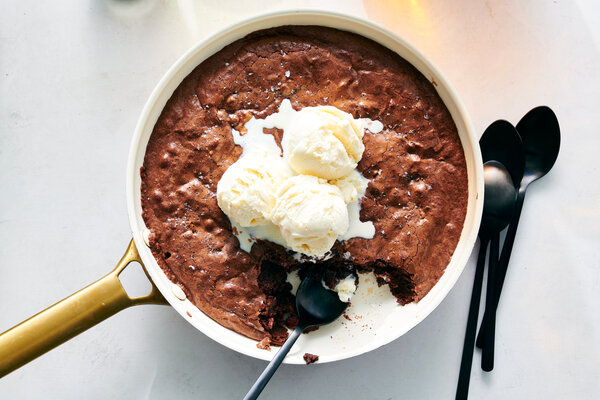The painter Derrick Adams, 55, came of age in New York in the late 1990s, at a time when artists of color were often relegated to showing their work in off-the-grid spaces like coffee shops, or “anywhere that would allow them,” as he recalled recently. He’s now represented by Gagosian, one of the world’s most influential art galleries, but, though he’s seen institutional support for Black artists grow over the course of his career, especially in the last five years, he believes we might be re-entering a moment of DIY hustle. With the federal government targeting diversity initiatives — and, in the current administration’s words, suppressing an “improper ideology” at institutions like the Smithsonian — there’s been a growing reluctance to show work that confronts racial politics and identity, the very work that the art business was chasing after and profiting from as recently as last year. “These are circumstances that are, unfortunately, very predictable,” Adams said, “especially for the Black community.”
Born to a close-knit middle-class family in Baltimore, where many relatives, including his mother, worked for the government, he knew he was interested in art early on, and was introduced to the work of the local legend Tom Miller, an art teacher in the Baltimore public school system who painted furniture and community murals and made art seem possible to Adams as a career. He went to college at Pratt Institute in Brooklyn, where he studied art and design education, and worked at Phat Farm, the fashion line started by his mother’s first cousin Russell Simmons, a co-founder of the music label Def Jam Recordings. After graduating, he worked at Rush Arts Gallery in Chelsea, which was owned by the Rush Philanthropic Arts Foundation, a nonprofit that sought to correct the absence of artists of color from galleries and museums and was founded by Russell and his two brothers, Danny and Joseph “Rev Run” Simmons of the group Run-D.M.C. Adams earned a masters from Columbia University in 2003, and parted ways from the gallery in 2009 to focus on his own practice. Today, seeking regular breaks from what he calls an “incestuous, repetitive” New York art scene, he often visits Baltimore, and established a nonprofit to help artists living there. “I left because of the lack of support,” he said. But he’s inspired by the younger artists who’ve made a life and career for themselves in Baltimore, fostering a culture that reminds him of a ’90s New York, in which “the market [is] not necessarily the divining principle of success or validation.”
In the 20th century, as Black figures became more prominent in art through the work of painters like Jacob Lawrence and Charles White, they were liberated from the servant roles they’d been relegated to playing throughout much of Western art history. In White’s words, Black artists began to feel a responsibility to make such figures “an integral part of the struggle” for equality. Adams sees his own work in part as a continuation of this movement, inserting the Black figure into scenes of leisure — floating in the pool, hanging out at a birthday barbecue, riding a bicycle, lying in a hammock. These paintings aren’t explicitly political, but they are radical in their representation of Black people simply going about their lives and enjoying their day, a privilege that in painting has long been reserved for white figures.
This interview, which has been edited and condensed, happened on a sunny Friday afternoon in early spring. A disco remix of Lena Horne’s vocals from “The Wiz” (1978) by Adams’s D.J. friend April Hunt, thumped throughout the lounge area of his Crown Heights studio. He likes to exhibit the work of artists he admires here, like a broken tambourine by the Brooklyn-based artist Ms. Z Tye, but he’d recently hosted an event so, at the moment, his own paintings — usually kept in a large workroom in the back — were on display. He seemed slightly embarrassed by this, but also perfectly matter-of-fact about his position in the marketplace. “I always say to people that I don’t make art to sell, but I sell paintings,” he said.
Juan A. Ramírez:
Derrick Adams:
I think that Black Americana is the opposite, almost the bizarro reality, of white Americana. White and Black Americans are not that different in their interests overall, it’s just that one group collectively doesn’t think the other deserves to have the same things they have. But both people came here around the same time. One group came and needed another group to build what they came here to do. Black people in America know white people very well. So the idea of us participating in similar things isn’t that odd. The way we distill information is very different. Even if we’re wearing the same clothes, it’s going to look different. The fact that we even have the term “Black Americana” is not our fault. The reason we had to do it is because there was no other Americana but white Americana. We have to say “Black history,” or “Black music” or whatever. For us, it’s just music.
J.A.R.:
You seem especially interested in the symbolism of pop culture. How does that find its way into your work — a painting like “Fantastic Voyage” (2024), for example?
D.A.:
J.A.R.:
Have you always been concerned with what people will think of your work when you’re dead?
D.A.:
What do you want people to know you were thinking about if you’re no longer around? Do you want people to think that you were thinking about how other people think about you? Do you want people to think you were making work because you were trying to oppose some counterperspective of you? I mean, a lot of artists are doing that already. There’s not a shortage of artists, especially Black artists, who are doing works that are about tackling these types of concerns. There are also artists doing things that are totally mediocre, mundane, whatever, and I think that Black artists should be able to make that too; there are plenty of mediocre white artists out here.
But I think there’s also a space for artists like myself who can incorporate — not necessarily a history lesson but an experience that you will walk away [from] and not feel exposed in the way that some art can make Black people feel when they’re in an institution. As a white artist, you aren’t put in that position to make work or to have work in a museum that’s talking about a history that might be very traumatic. When you come to a museum as a Black person, more than likely you’re going to experience that. White people don’t really have to experience that in a museum; it’s more of a leisurely day of looking at art.
J.A.R.:
How has your experience as a Black artist in this business changed over time?
D.A.:
In the ’90s, there was no market for Black artists or artists of color. Most Black artists, if they were exhibited, were in a nonprofit space. Funding might go back to what it was [then], where only certain faces get funding. I just think artists in communities that have not always been considered will not stop doing. They will persevere through whatever limitations are put in front of them. It’s not going to stop the creative process. Sometimes these challenges bring about a certain level of passion and exchange and imagination that might be even more dynamic than having a lot of money thrown at you.
J.A.R.:
What do you think we’ll see in terms of subjects?
D.A.:
It’s also very important to reflect on the accomplishments that we sometimes forget. We don’t really even recap the successes, we just see them on our Instagram feed every now and then. That’s a challenge for humanity, especially in creative fields and the Black community: normalizing the triumphant moments. There are a lot of things we still don’t know about people who contributed to our society who are Black, who we’re benefiting from. [That’s] something that I should personally focus more on because I know that there are so many things that Black people contributed to American culture and world culture that a lot of people do not know. People who don’t like Black people are using ironing boards patented by a Black woman. People using spatulas patented by a Black person, the radiator in people’s houses was patented by a Black man. That’s why the idea of taking things away from me only makes me hungrier for information.
Photo editor: Esin Ili Göknar. Digital production and design: Danny DeBelius, Chris Littlewood, Coco Romack, Carla Valdivia Nakatani and Nancy Wu










